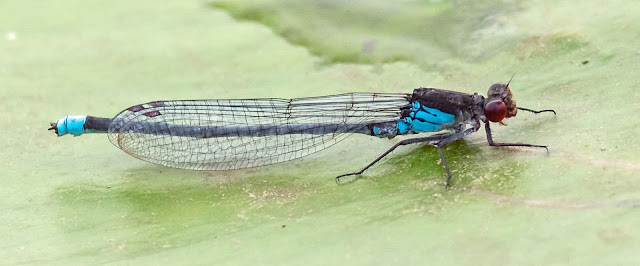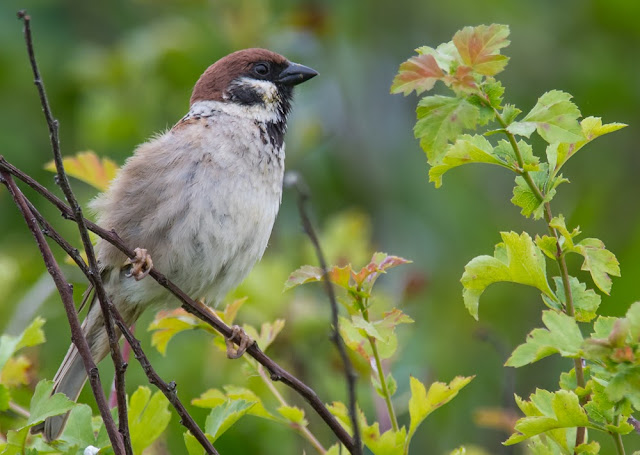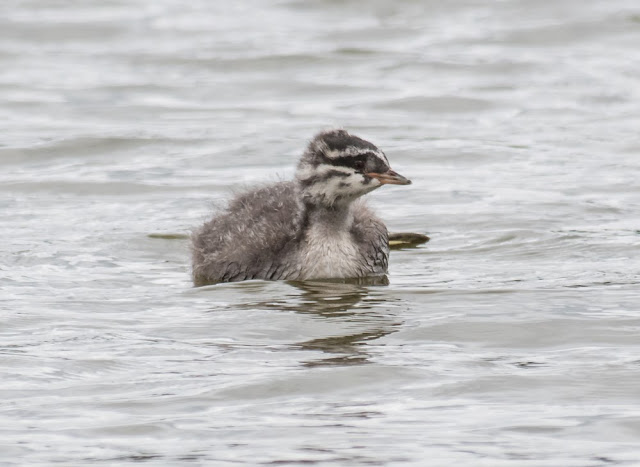 At this time of year when things can be a bit quiet on the birding front, many bird photographers turn to photographing other things, with damselflies and dragonflies being a particular favourite. I've never really done this yet, mainly because I thought you needed a macro lens to get anything like decent shots.
At this time of year when things can be a bit quiet on the birding front, many bird photographers turn to photographing other things, with damselflies and dragonflies being a particular favourite. I've never really done this yet, mainly because I thought you needed a macro lens to get anything like decent shots.But after having done my first foray into this microworld of insects with the Red-eyed Damselfly at Pennington Flash last week, I decided I would experiment a bit more in playing Damsels and Dragons. This time however, I would be using my Nikon D810 32 megapixel full frame camera to try to get as much closeup detail as possible.
Darcy Lever Gravel Pits in Bolton is a well-known area for such little beasties and as is it fairly local to me I decided to start there. I often go to Moses Gate Country Park in the winter months, but never cross the main road to visit the Gravel Pits on the other side. I say 'never' but I have been once before to find out where it is.
After a quick look at the map board I decided on a roughly circular route around the area taking in the main ponds. However, the one main thing I can remember from a half-day course I did on pond-dipping and associated insects was that dragonflies only really come to the ponds to lay their eggs, and they spend most of their time away from the water in the grasses and other vegetation close by.
After walking along the old canal towpath, my first port of call was the Education Pond as shown on the map above. There is quite a lot of open water here and I immediately saw some Common Blue Damselflies hovering over the water and later mating. Eventually I managed to get one on a stalk and close enough for a photograph. There were also a couple of red-coloured dragonflies about, but they never settled anywhere for me to see them properly. A Brown Hawker did fly in and start ovipositing on a piece of vegetation floating in the water.
I also looked in the nearby piece of grassland where I found quite a lot of Gatekeeper and Meadow Brown butterflies as well as this immature male Common Darter dragonfly which was well camouflaged amongst the moss and ground vegetation.
From the grassland I took the path towards Old Hall Farm, but the ponds along this route were very overgrown with vegetation and I couldn't really see anything in them. From the farm I took the left fork in the route through the access gate where I found the most productive patch of vegetation for today. This male Ruddy Darter landed closely and there were lots of bees and other insects on and around the Yellow Ragwort plants.
There were also more Gatekeeper and Brown Meadow butterflies here (some of which were mating) as well other flies of various sorts. Here's a small selection:
Finally I found this male Ruddy Darter dragonfly. I thought this was a female at first due to its orange colour but apparently not.
After this I headed off back to the canal towpath and on my way back to the car called in at the Education Pond again and the first overgrown pool which I had bypassed at the start of my walk. There was nothing much new to report at either place
Useful Links
Don't think for a minute that I knew what all these creatures were called when I took the photos - I used these two websites plus confirmations off the UK Dragonflies and Damselflies Facebook group page to help identify them - thanks guys!
http://www.british-dragonflies.org.uk/content/dragonfly-and-damselfly-identification-help
http://www.surfbirds.com/dragonfly-guide.html
UK Dragonflies & Damselflies



















































